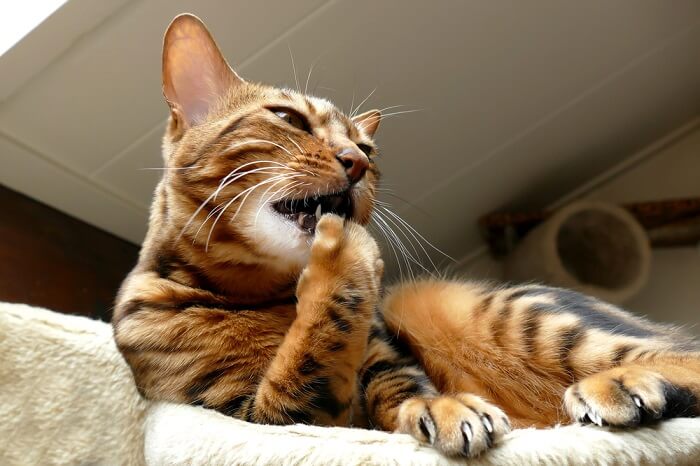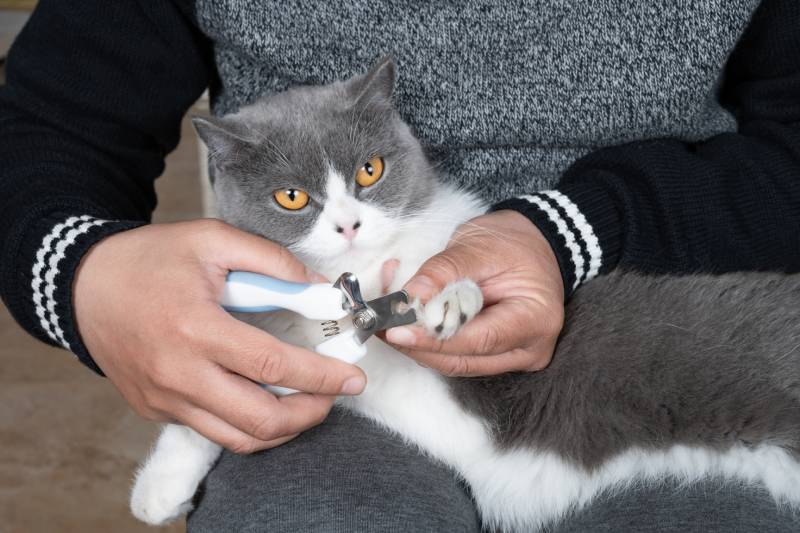Welcome to our guide on how to clip your cat’s nails at home without making common mistakes. Clipping your cat’s nails can be a challenging task, but with the right techniques and precautions, you can keep your feline friend’s paws healthy and well-groomed. In this article, we will cover some of the most common mistakes pet owners make when trimming their cat’s nails and provide professional tips to avoid them. Whether you are a seasoned professional or a first-time cat nail clipper, this guide is for you.
The Importance of Regular Nail Trimming
Before we dive into the common mistakes, let’s understand why regular nail trimming is essential for your cat’s well-being. Cats have retractable claws that can become sharp and long if not trimmed regularly. Overgrown nails may cause discomfort, pain, and even lead to health issues. By keeping your cat’s nails at the appropriate length, you can prevent scratching-related accidents, reduce damage to your furniture, and improve your cat’s overall paw health.
Mistake1: Using the Wrong Tools
One of the most significant mistakes cat owners make when attempting to trim their cat’s nails is using inappropriate tools. It is crucial to invest in proper nail clippers designed specifically for cats. The two main types of clippers are guillotine-style and scissor-style. Guillotine-style clippers are recommended for small to medium-sized cats, while scissor-style clippers are suitable for larger cats with thicker nails. Using the wrong type of clippers can cause discomfort and may even lead to accidents.
Mistake 2: Neglecting to Familiarize Your Cat with the Process
Familiarizing your cat with the nail clipping process is crucial to ensure a smooth and stress-free experience for both you and your feline companion. Many cat owners make the mistake of neglecting to introduce their cats to nail clippers gradually. Take some time to get your cat accustomed to the sight and sound of the clippers. You can start by showing the clippers to your cat, allowing them to sniff and investigate them. Reward your cat with treats and praise to create positive associations with the clippers.
Mistake 3: Clipping the Nails Too Short
One of the most common mistakes cat owners make is cutting the nails too short. Cats have a sensitive area called the quick, which contains blood vessels and nerves. Trimming the nails too close to the quick can cause pain and bleeding. It is essential to locate the quick before you start clipping your cat’s nails. The quick is visible as a pink area within the translucent part of the nail. Avoid cutting into the quick and aim to trim just the sharp pointed tip of each nail.
Mistake 4: Attempting to Clip Uncooperative Cat’s Nails
Clipping a cat’s nails can be a challenging task, especially if your feline friend is uncooperative. Many cat owners make the mistake of forcing their cats to stay still for nail clipping. This can cause stress and can even lead to accidents. Instead, it is crucial to create a calm and comfortable environment for your cat before attempting to trim their nails. Consider using treats, toys, or gentle restraint techniques to keep your cat relaxed and focused during the nail trimming process.

Mistake 5: Not Having Styptic Powder or Cornstarch on Hand
Accidents can happen even to the most experienced cat nail clippers. One common mistake is not being prepared for a nail to bleed. If you accidentally cut into the quick, it can cause bleeding. To stop bleeding quickly, it is essential to have styptic powder or cornstarch on hand. These substances help clot the blood and stop bleeding. Apply a small amount of styptic powder or cornstarch to the bleeding nail and apply gentle pressure. If bleeding persists or if you have any concerns, consult your veterinarian.
Mistake 6: Neglecting Regular Nail Maintenance
Regular nail maintenance is crucial to ensure your cat’s nails remain at an appropriate length. One common mistake is neglecting to establish a regular nail trimming routine. The frequency of nail trims depends on your cat’s lifestyle and individual nail growth rate. Some cats may require trims every few weeks, while others may need them more or less frequently. Create a schedule that works for both you and your cat to ensure their nails are always in optimal condition.
Mistake7: Ignoring Signs of Discomfort or Pain
When clipping your cat’s nails, it is essential to pay attention to their behavior and body language. Ignoring signs of discomfort or pain can lead to distress and potential accidents. If your cat becomes agitated, vocalizes, or pulls their paw away, it may be an indication that they are experiencing discomfort. Always prioritize your cat’s well-being and take breaks if necessary. Consulting with a professional groomer or veterinarian can provide valuable guidance if you are unsure about your cat’s behavior during nail trimming.
Mistake 8: Not Seeking Professional Help When Needed
While trimming your cat’s nails at home can save time and money, it is crucial to know when to seek professional help. Some cats may require sedation or have specific grooming needs that are best handled by a trained groomer or veterinarian. If you are unsure about your cat’s behavior, have difficulty identifying the quick, or encounter any complications while trimming their nails, do not hesitate to reach out to a professional. They have the expertise and tools to ensure a safe and stress-free nail clipping experience for your cat.
Conclusion
Clipping your cat’s nails at home can be a rewarding experience when done correctly. By avoiding these common mistakes and following the professional tips we’ve provided, you can maintain your cat’s nails in optimal condition while keeping them comfortable and stress-free. Remember to always prioritize your cat’s well-being, take breaks if needed, and seek professional help when necessary. Happy nail clipping!


